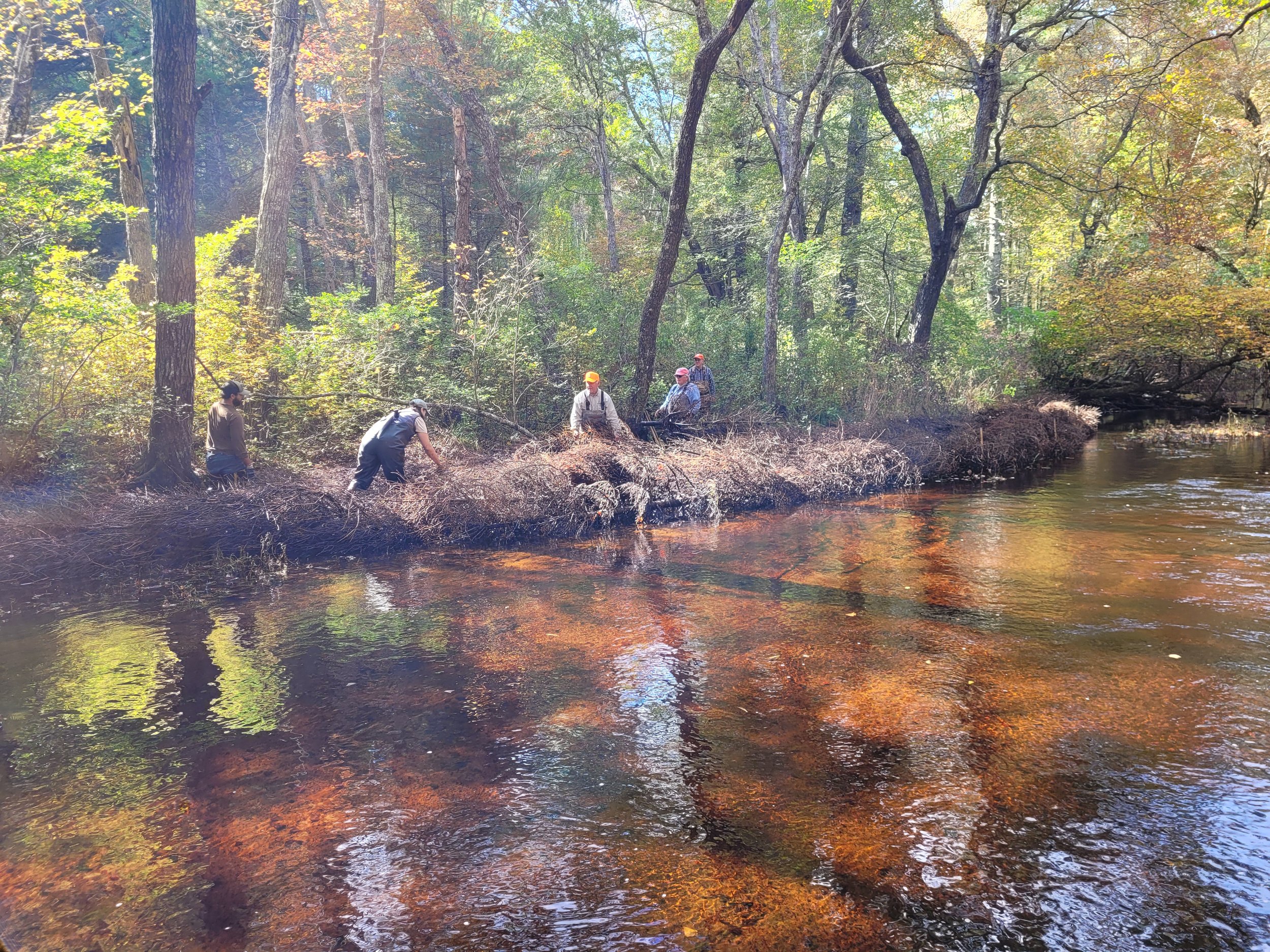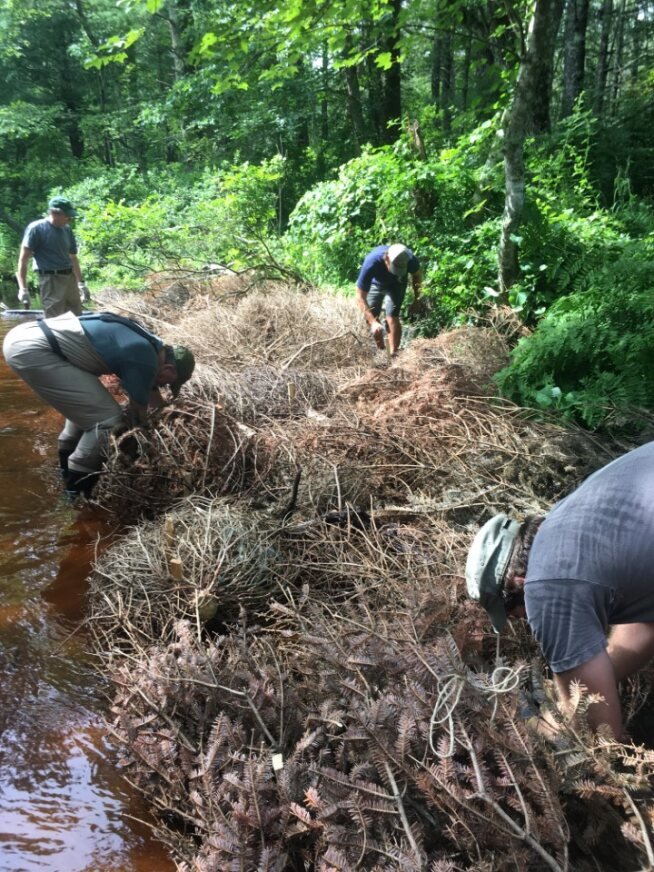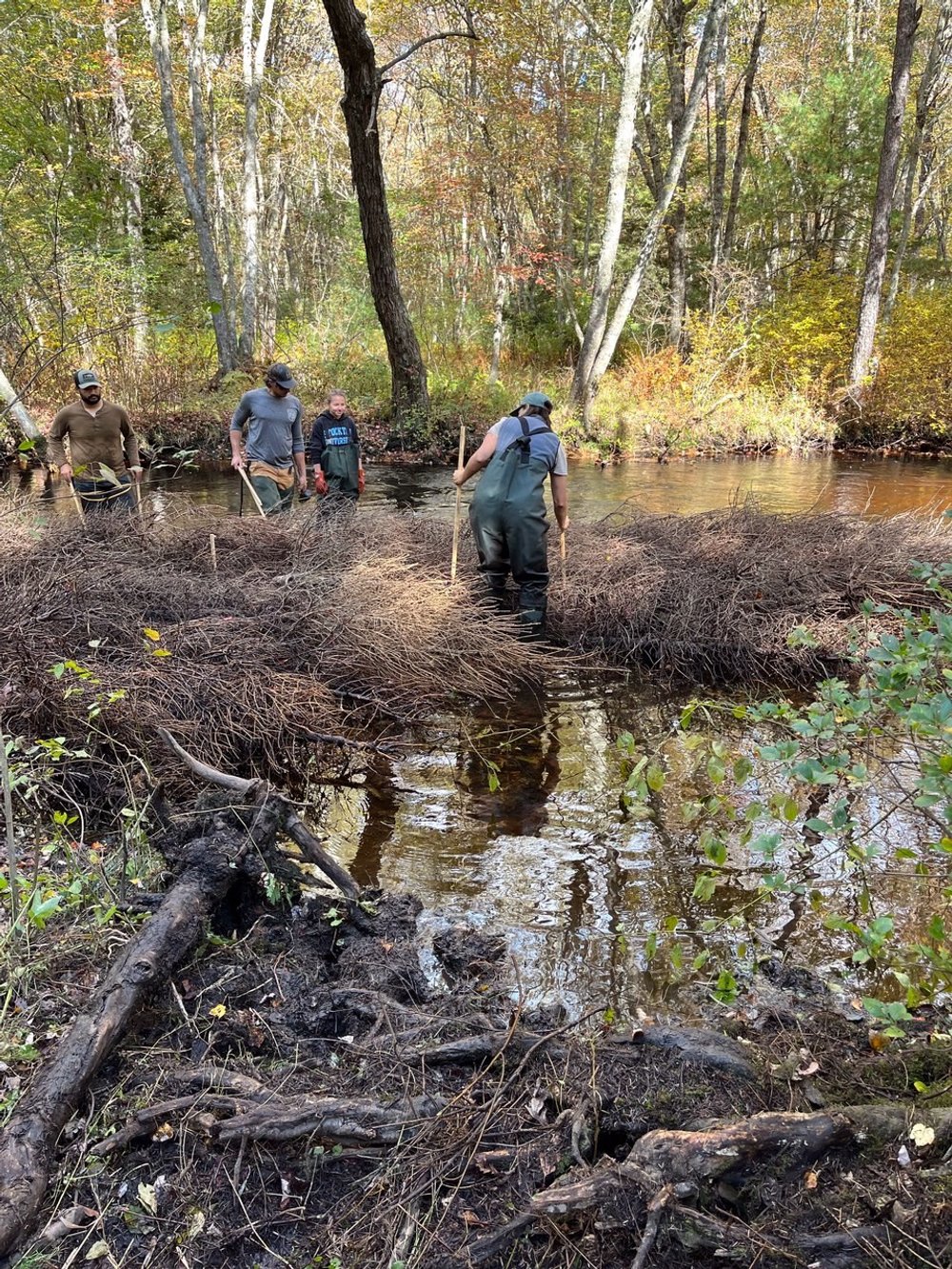Trees For Trout
About the Project
What Are We Doing WIth The Trees?
Rhode Island TU and RIDEM Fish and Wildlife are partnering to improve stream and river habitat. The trees that are collected in January are stored until summer, when they are installed in areas with wild Brook Trout (Salvelinus fontenalis).
Volunteers use the donated trees to build structures that help rivers and streams rebuild their own banks. This project helps restore habitat with minimal disruption to nature.
While saving holiday trees from the landfill, we are also helping fish and other aquatic life.
where do the trees go?
Donated trees are added along the banks of streams and rivers where wild Brook Trout currently live but where the habitat is not ideal. These water bodies may have banks that are already eroded or likely to erode, sections that are too wide, shallow, and warm, or a lack of hiding spots for fish.
These installations have been added to the Wood River and its tributaries.




what is the goal?
To help Brook Trout!
Brook Trout are Rhode Island’s only native species of trout. Known for their colorful markings and white-tipped fins, they live mainly in clean, cold streams and rivers.
What do they need?
Cool water with a high oxygen level
Hiding spots overhanging riverbanks, branches, and other structures
The ability to move between habitat that stays cool in the summer and is ideal for spawning in the fall
Unpolluted water
Invertebrates and prey fish to eat
With these resources threatened, Brook Trout have become a Species of Greatest Conservation Need in Rhode Island.
Conifer revetments help make waterways deep, cool, and clear enough to support brook trout, even during periods with little rain and warm temperatures.
how does it work?
The trees are installed as conifer revetments. Several conifers (e.g. Christmas trees) are positioned to extend out from the existing riverbank into the water, where their branches catch flowing sediment. Over time, sediment continues to build up around the trees and a new bank is formed.
This new bank makes the stream narrower, helping fish by creating a deeper channel and cooler water. Before they are filled in, the trees provide good habitat, especially for juvenile trout. The new bank also reduces erosion and creates a more stable streambank.
diagram courtesy of Jeff Yates.
changing streams
Streams and rivers are constantly changing, but many of the changes we see today are caused by people, either indirectly or directly. Some of the changes responsible for these changes include:
Straightening or widening stream/river channels, which makes the water shallower and warmer, and the banks more prone to erosion
Clearcutting trees, shrubs, and other vegetation from the banks
Building dams, which restrict fish movement and send warmer water downstream
Cattle roaming in/around streams, destabilizing the banks and sending excessive amounts of sediment and nutrients into the water
Increasingly severe storms and flooding
how you can help
Improve water quality and wildlife habitat in your backyard!
Avoid using pesticides and herbicides
Avoid clearing vegetation from in/around streams
Plant native vegetation along streams to serve as shade and hiding spots for fish, help stabilize banks, and form natural buffers from chemicals
Keep livestock away from streams
Do not place conifers in the stream ourselves: this requires planning and knowledge of stream morphology to be effective



